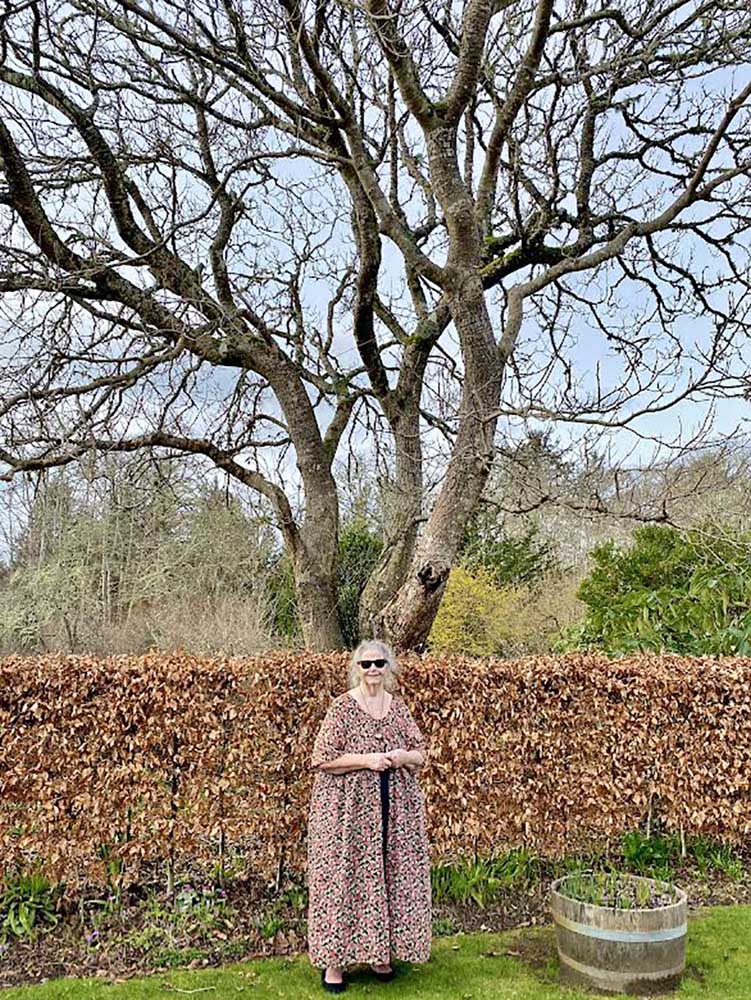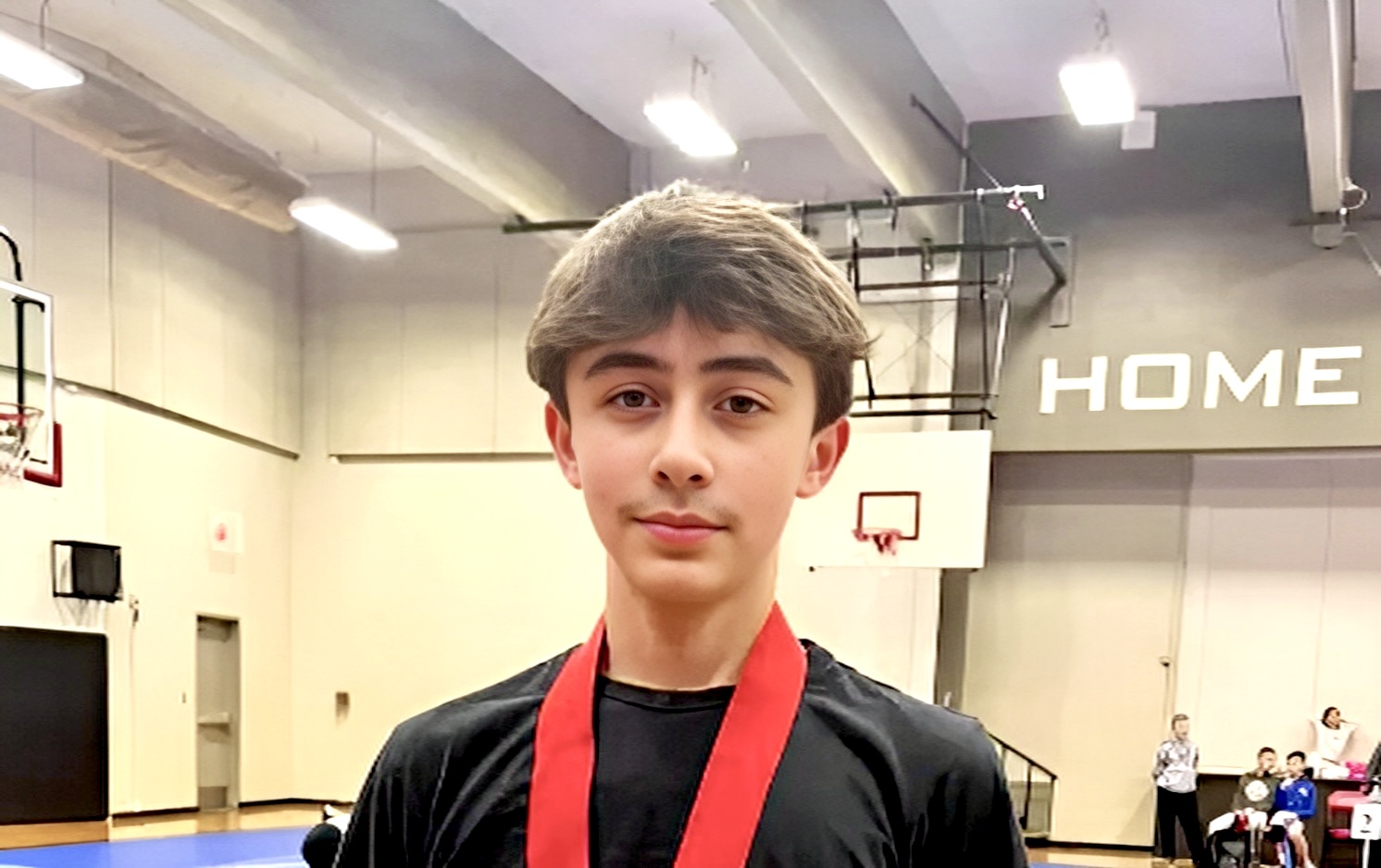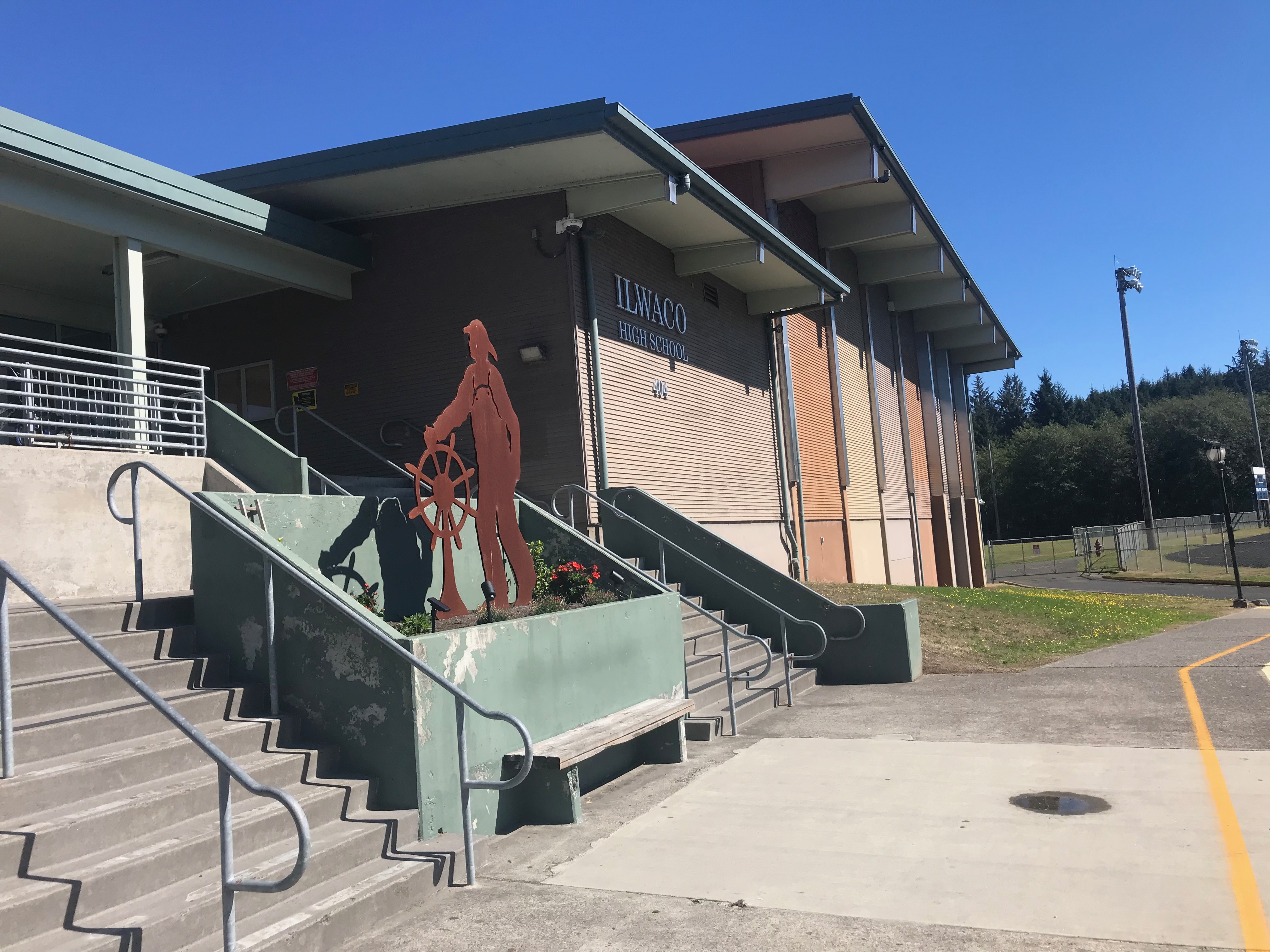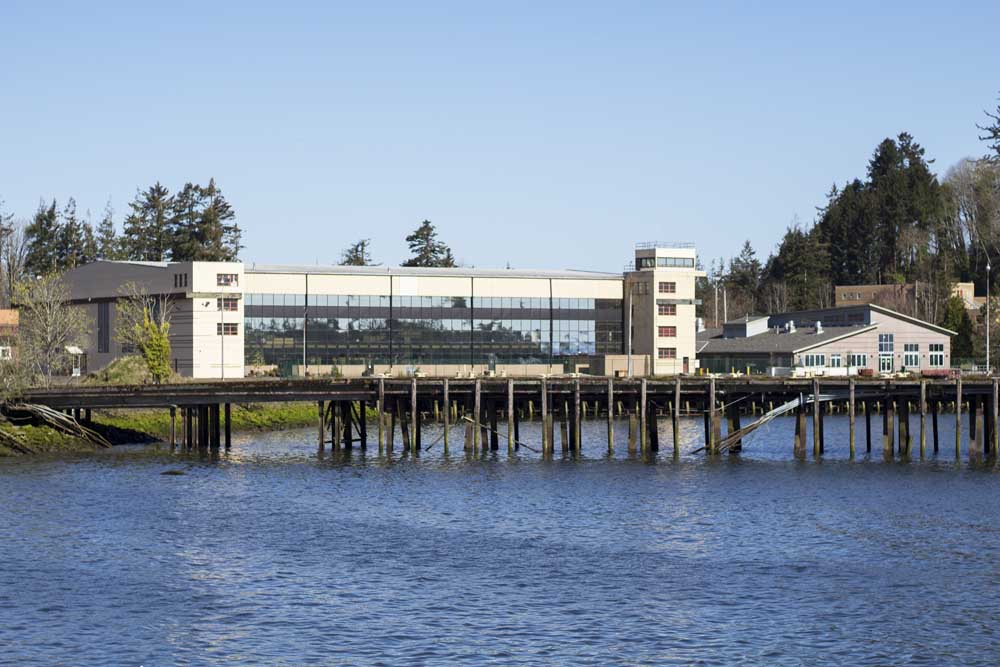‘Detective’ campaign produces fruitful results: Tree advocates chronicle a branch of NW history
Published 9:48 am Saturday, February 17, 2024

- Kathleen Davies is dwarfed by the scale of the walnut tree at the W.D. Taylor House in Oysterville. Davies and others have been working for years to document heirloom fruit trees as an important element of Peninsula history.
Kathleen Davies is all about trees.
For the past few years, interrupted by the covid break but now in full swing, she has been compiling an inventory of heritage fruit trees.
The project earned positive exposure back in 2017 when Observer columnist Cate Gable described Davies’ early activities. Since then, Sydney Stevens has highlighted her work.
Now the project is getting closer to bearing fruit.
“History is a detective story,” Davies said. “We are going to document the trees and take about 20 with the best stories, the most historical, and put the history together, so they are like ‘witness’ trees.”
‘Trees are witnesses to history and often the last marker. Their existence on the land holds stories to be told about our past.’
Kathleen Davies, tree researcher
The most significant may be tagged so if Long Beach Peninsula properties change hands, new owners know the history. “They are going to be able to tell the story of each place.”
Davies is eager to share any kudos with collaborators Nancy Allen and Barbara Christian. Lynnette McAdams, David Campiche and drone specialist Bob Duke are among those offering photography help, which could morph into a visual exhibit.
‘Great adventure’
“It has been a great adventure,” said Davies, convinced that trees are key to the historical record and a healthy ecosystem. As well as providing food and offering natural beauty, they are important as oxygen makers and carbon sequesters.
Davies believes the information her team documents will help newcomers learn about their community, while becoming important tools as agricultural scientists track trends, including the impacts of climate change.
“We may be documenting all this for posterity.” she said. “I love trees. I am a big tree person. They are important in history.”
Wagon travel
Fruit has flavored American history. President Thomas Jefferson’s orchard had more than 1,000 trees, with 38 varieties of peaches plus other fruit, including the Hewe’s crab apple, the Newtown Pippen apple and the Seckel pear. Although he experimented planting European varieties, he reportedly bragged to the French that his Virginia produce was superior.
The concept of trees having a pioneer or heirloom status worth recording is not new: a Seeds Savers farm in Decorah, Iowa, was promoting the concept in 1975. East Coast orchardist Tom Burford, who died in 2020, published “Apples of North America” in 2013, documenting 192 heirloom varieties while lamenting the modern victory of appearance over taste.
Western historians have documented the baggage of the Oregon Trail wagon travelers, noting many brought buckets of apples from their East Coast and Midwest homes. Cuttings rather than seeds were used to grow trees when they homesteaded.
Some regional records exist. Davies has sought help from Stark Nurseries in Portland, which dates to 1816, and the Joanie Cooper Temperate Orchard Society in Oregon. At the Julia Butler Hansen House in Cathlamet, a pear tree has a narrative panel that reads: “1858, purchased from Hudson Bay Co. Cowlitz Farms.”
‘Lost apples’
The Whitman County Historical Society in eastern Washington started a “lost apple” project which earned national publicity. Researchers tallied about 4,000 varieties of apples today, but the United States once may have had as many as 17,000.
Efforts to broaden fascination for the topic continue on an active Facebook page that documents each success story or newspaper report while highlighting conferences and grafting classes.
Much of the focus has been in Washington and neighboring Idaho, but Colorado scientists announced the discovery of a long-lost variety in 2019. A year later, the Associated Press reported on the Whitman leaders “rediscovering” 10 Pacific Northwest apple varieties thought to be extinct.
The hunt
The local version of the project, like many valuable endeavors on the Long Beach Peninsula, came from a not-so-chance remark from historian Jim Sayce, who advocates a concept of “reading the land” to discover markers of history.
Remembering that Community Historian Project meeting at the Columbia Heritage Museum in Ilwaco, Davies recalled Sayce mused, “Wouldn’t it be great if someone hunted down and documented early pioneer fruit trees and orchards?”
She has pared down the scale of the project, at first wondering if all Pacific County could be covered, then realizing how many trees exist in Naselle alone. Early inquiries uncovered more than 100 fruit trees on the Peninsula, including pear, plum, crab apple, cider apple, Indian plum, cherries, quince and fig; even a Hawthorn tree has a berry used as a medicinal tea.
Her grandfather John H. Davies’ orchard on Smith Creek north of Raymond was one inspiration. Eventually research targets were narrowed to just the Long Beach Peninsula, then to the specific trees to use as the best examples.
While her ancestral connection drives her, Davies acknowledges a bigger picture. “Community history brings a richness to our lives,” she said, “and makes visible the past to understand the value of our community in a deeper way.”
Appeal for aid
Davies hopes her collaborative research will produce a publicly accessible book or document that historians can review, perhaps with an exhibit that highlights heirloom fruit trees. Working with local orchard owners to encourage grafting of rarer varieties may prove a practical method of preservation, too.
She appealed for anyone interested in learning about how to help preserve fruit trees in Pacific County to email heirloomfruittreeproject@gmail.





